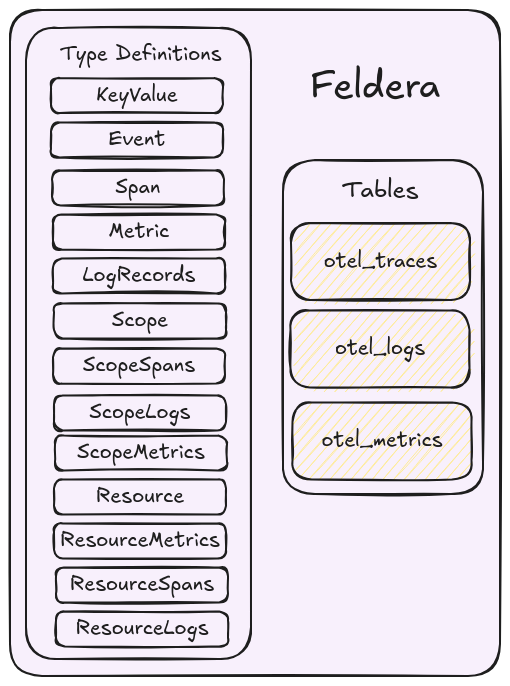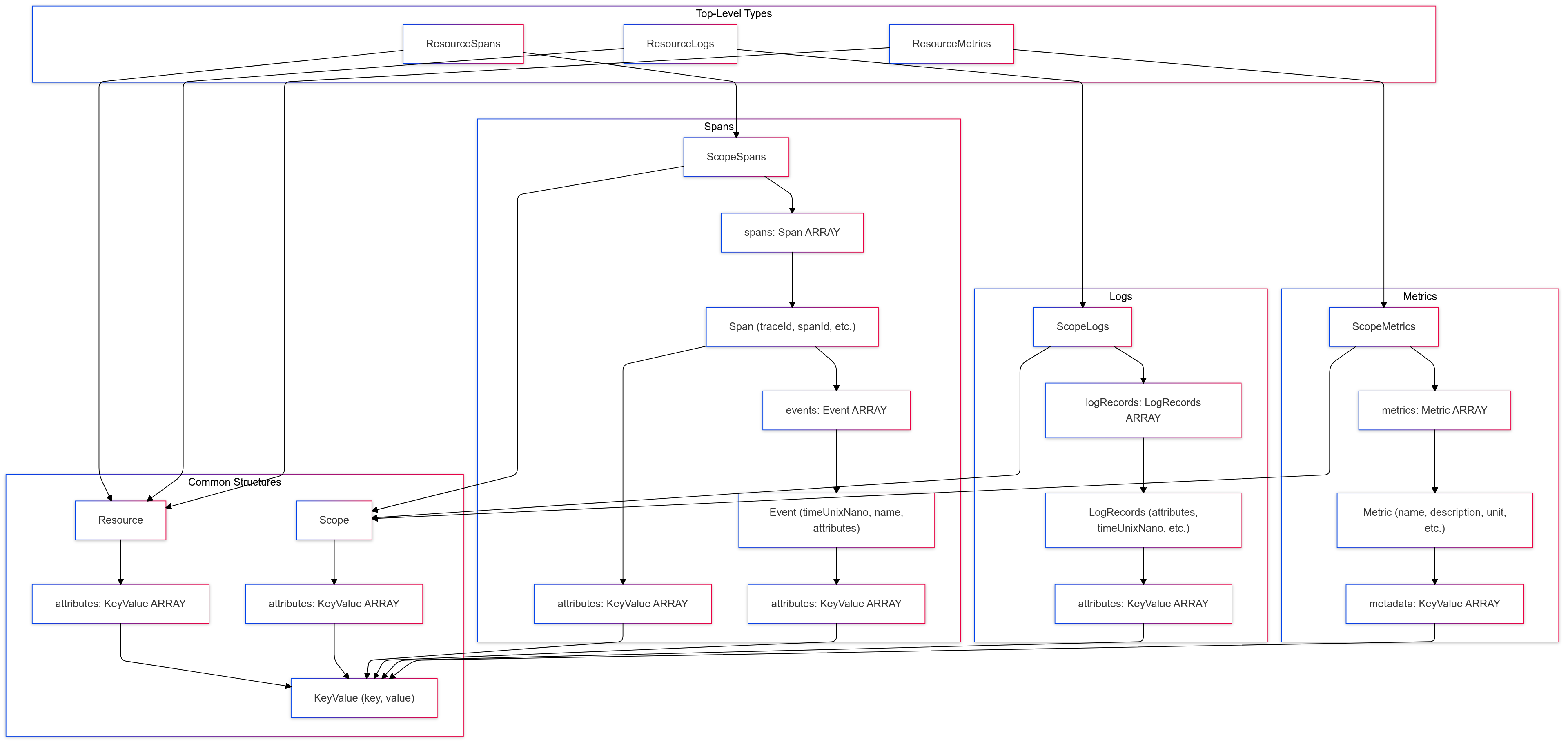Representing OTel Data

OpenTelemetry data is typically structured as nested JSON, which we can model as user-defined SQL types (see: User Defined Types Docs) in Feldera
based on the OTel Protobuf definitions.
While it is possible to represent the entire OTel JSON data as a VARIANT type (VARIANT docs),
user-defined types are more efficient and ergonomic in cases when the JSON schema is known in advance.
Custom types also have a smaller memory footprint and offer better type checking.
Feldera SQL allows us to define these custom types as follows:
CREATE TYPE KeyValue AS (
key VARCHAR,
value VARIANT
);
CREATE TYPE Event AS (
timeUnixNano CHAR(20),
name VARCHAR,
attributes KeyValue ARRAY
);
CREATE TYPE Span AS (
traceId VARCHAR,
spanId VARCHAR,
traceState VARCHAR,
parentSpanId VARCHAR,
flags BIGINT,
name VARCHAR,
kind INT,
startTimeUnixNano CHAR(20),
endTimeUnixNano CHAR(20),
attributes KeyValue ARRAY,
events Event ARRAY
);
CREATE TYPE Metric AS (
name VARCHAR,
description VARCHAR,
unit VARCHAR,
sum VARIANT,
gauge VARIANT,
summary VARIANT,
histogram VARIANT,
exponentialHistogram VARIANT,
metadata KeyValue ARRAY
);
CREATE TYPE LogRecords AS (
attributes KeyValue ARRAY,
timeUnixNano CHAR(20),
observedTimeUnixNano CHAR(20),
severityNumber INT,
severityText VARCHAR,
flags INT4,
traceId VARCHAR,
spanId VARCHAR,
eventName VARCHAR,
body VARIANT
);
CREATE TYPE Scope AS (
name VARCHAR,
version VARCHAR,
attributes KeyValue ARRAY
);
CREATE TYPE ScopeSpans AS (
scope Scope,
spans Span ARRAY
);
CREATE TYPE ScopeLogs AS (
scope Scope,
logRecords LogRecords ARRAY
);
CREATE TYPE ScopeMetrics AS (
scope Scope,
metrics Metric ARRAY
);
CREATE TYPE Resource AS (
attributes KeyValue ARRAY
);
CREATE TYPE ResourceMetrics AS (
resource Resource,
scopeMetrics ScopeMetrics ARRAY
);
CREATE TYPE ResourceSpans AS (
resource Resource,
scopeSpans ScopeSpans ARRAY
);
CREATE TYPE ResourceLogs AS (
resource Resource,
scopeLogs ScopeLogs ARRAY
);
The following graph illustrates the type hierarchy of the custom types defined above:

Now that we have the type definitions to represent the OTel data, we create tables.
Tables in Feldera model input data streams.
-- concat with the type declarations above
-- Input table that ingests resource spans from the collector.
CREATE TABLE otel_traces (
resourceSpans ResourceSpans ARRAY
) WITH ('append_only' = 'true');
-- Input table that ingests resource logs from the collector.
CREATE TABLE otel_logs (
resourceLogs ResourceLogs ARRAY
) WITH ('append_only' = 'true');
-- Input table that ingests resource metrics from the collector.
CREATE TABLE otel_metrics (
resourceMetrics ResourceMetrics ARRAY
) WITH ('append_only' = 'true');
Feldera operates on changes, so any input may be an insertion or deletion.
Setting 'append_only' = 'true', allows Feldera to potentially optimize the programs better
and ensures only insertions are supported for this table.